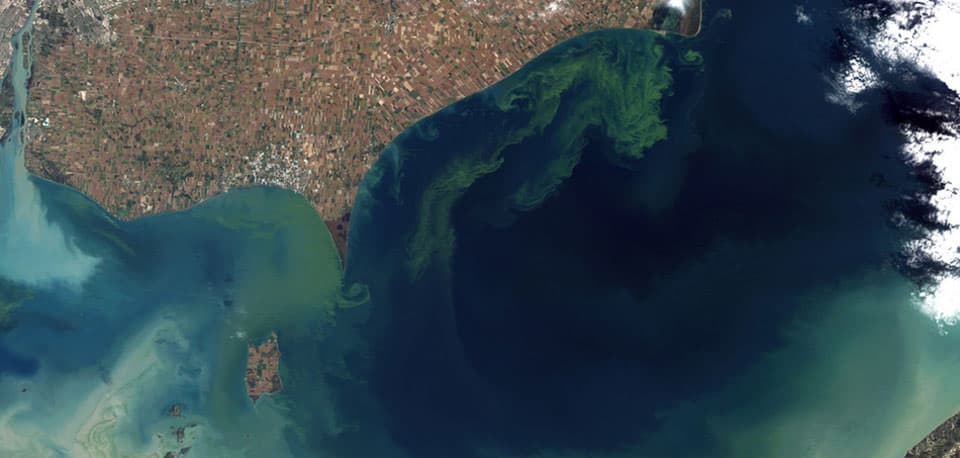What is ecoforecasting?
Ecoforecasting predicts how ecological events may impact human health, food, water, and the environment.

Ecoforecasts bring together wide-ranging research and observations to allow coastal resource managers to answer "What if?" questions about the numerous factors that affect coastal resources. Here, a NASA satellite image shows a harmful algal bloom underway in Lake Erie. Predicting harmful blooms of algae in coastal regions and the Great Lakes is one of many ecoforecast services provided by NOAA.
Did you know?
NOAA’s ecoforecasting efforts made it possible for experts to confidently predict the end of the third global coral bleaching event. NOAA and partners used ocean temperature data from satellites and operational climate models to determine that widespread coral bleaching was no longer occurring in Earth’s three ocean basins (Atlantic, Pacific and Indian) indicating the likely end to the global coral bleaching event.
Ecoforecasts detail how interactions between organisms and their environment may affect economies and communities that depend on ecosystem services, human health, and the health of waterbodies.
Major benefits of ecological forecasts include:
- Improving decisions to sustain the productivity of ecosystems and to reduce the impacts of extreme natural events and human activities;
- Bringing scientists and resource managers together to solve resource management challenges; and,
- Focusing scientific research and monitoring priorities to reduce uncertainties in environmental conditions.
Predicting the amount of oxygen depletion in water (hypoxia) is just one example of ecoforecasting. Certain fertilizers used in farming operations can seep into neighboring waters, causing nutrient overabundance. Excess nutrients can reduce the amount of oxygen in the water, creating a hypoxic environment, which can, in turn, harm marine life. By integrating such factors as historical data about seasonal fertilizer usage, water temperature, sea level rise, and the affected waterbody’s natural hypoxic cycle, scientists produce ecoforecasts that help inform strategies for controlling nutrient pollution.
NOAA scientists continue to develop a suite of ecological forecasts to support more effective ecosystem management. The forecasts bring together wide-ranging research and observations to allow coastal resource managers to answer "What if?" questions about the numerous factors that affect coastal resources, including harmful algal blooms, pathogens, and coral bleaching.
Social